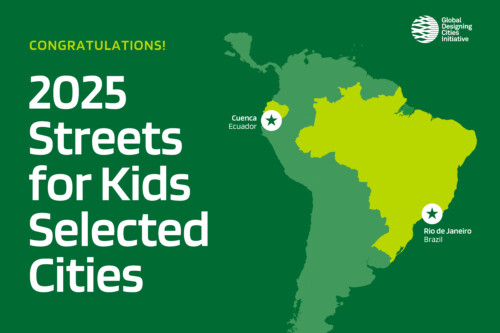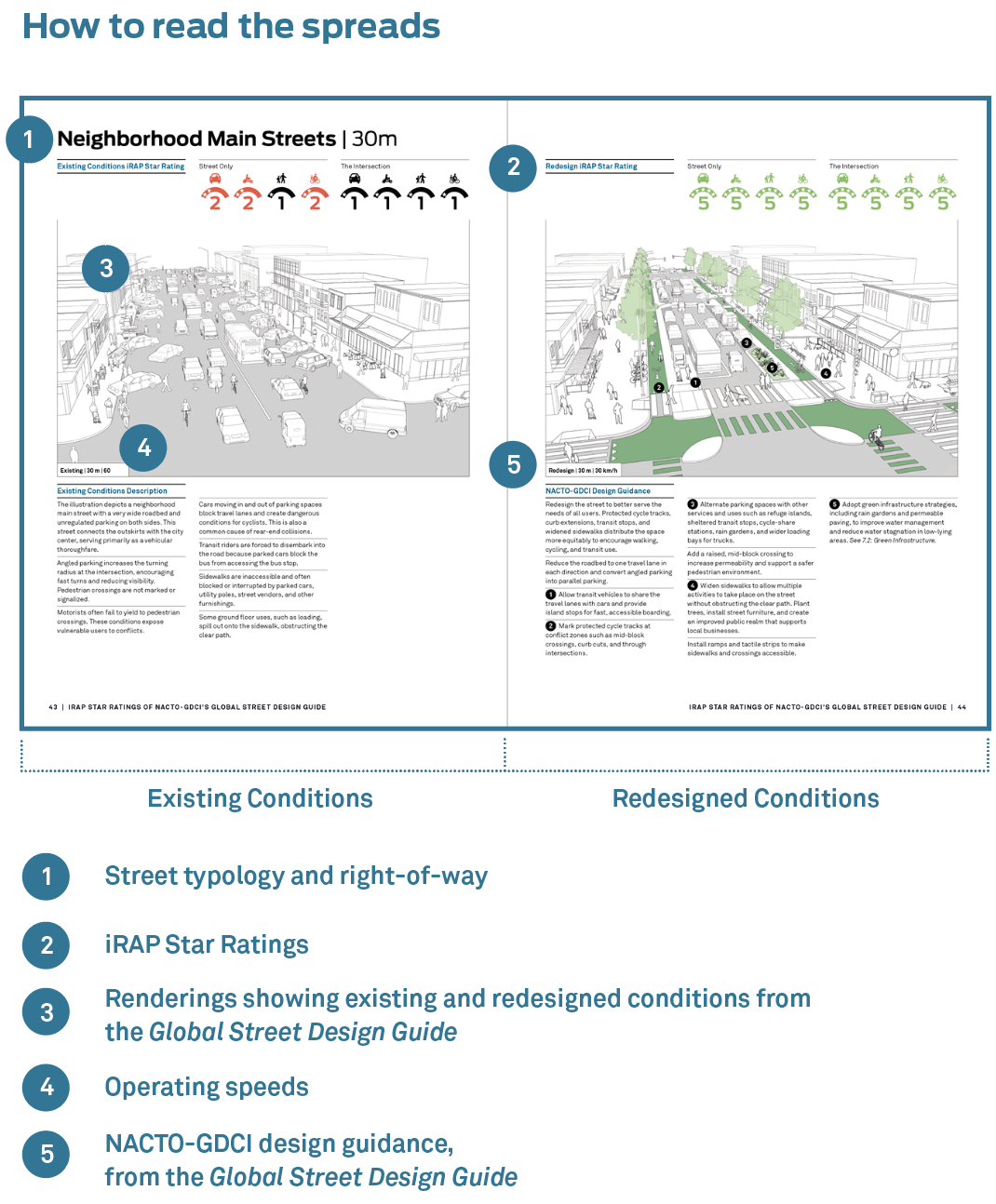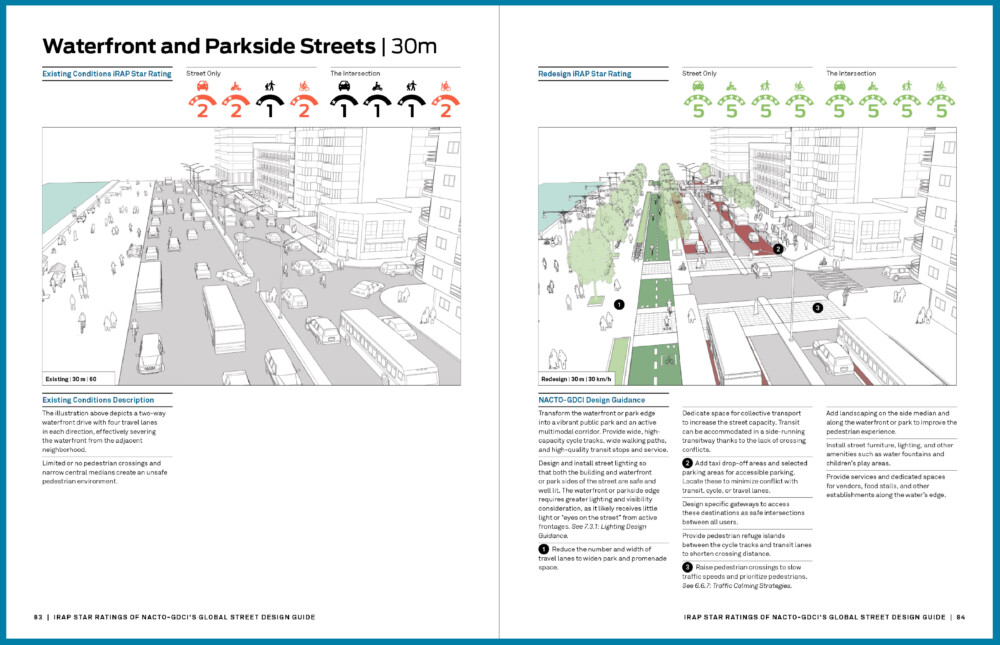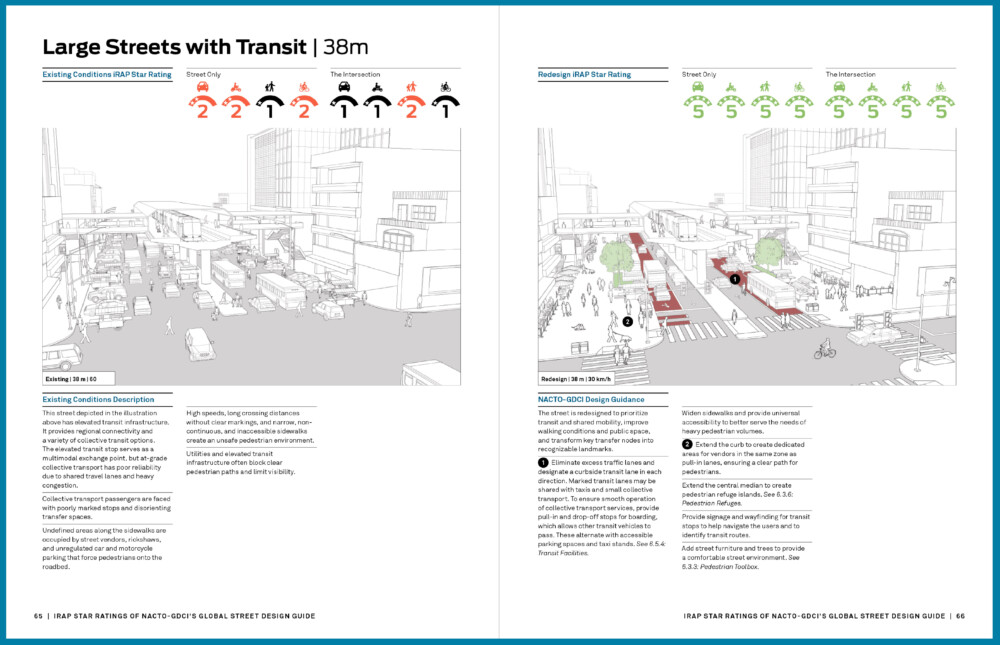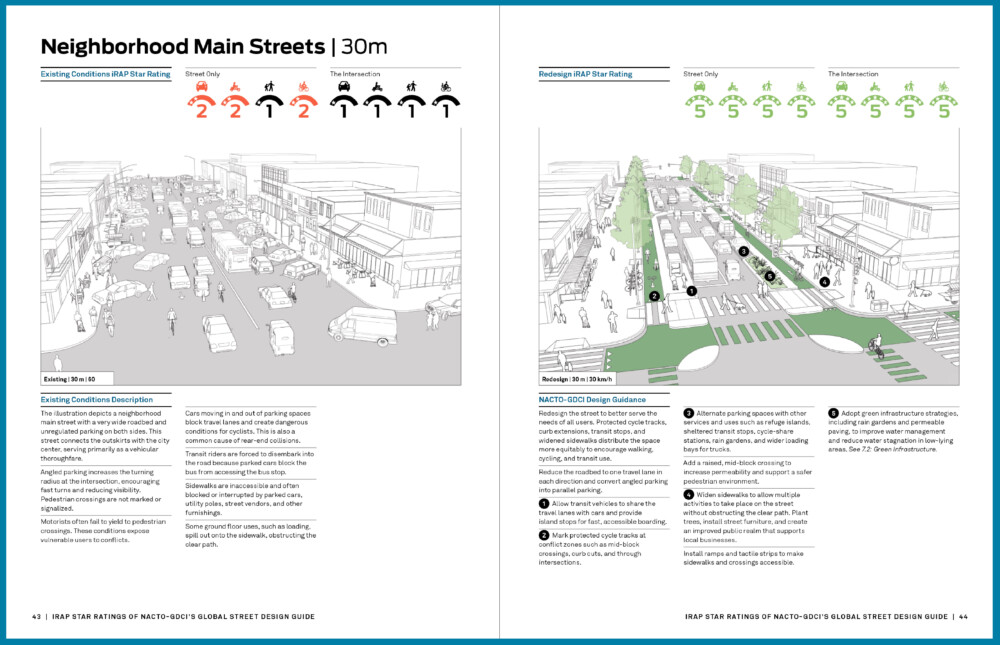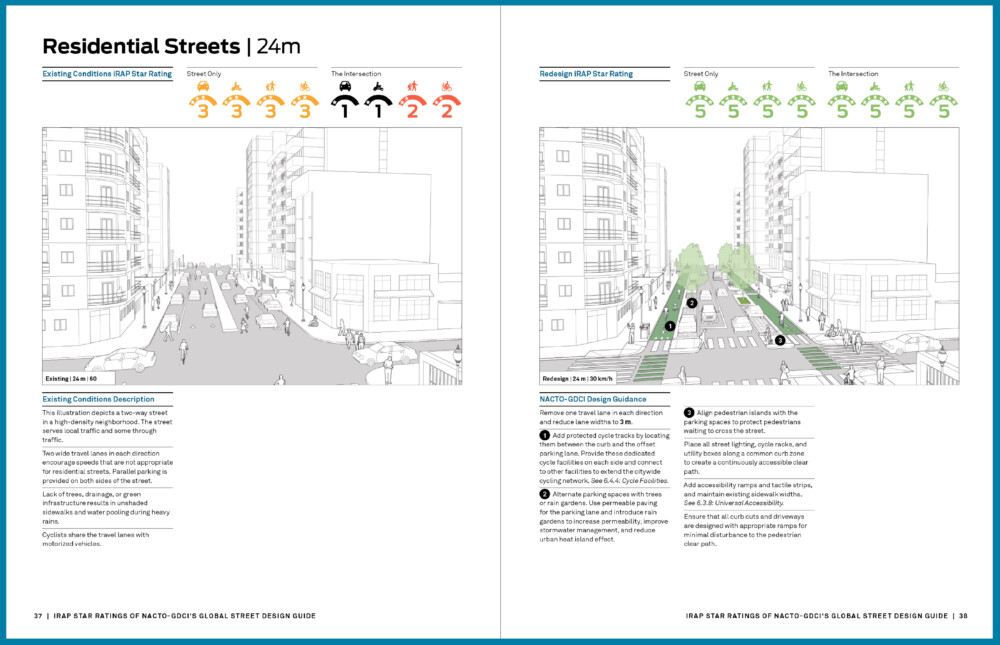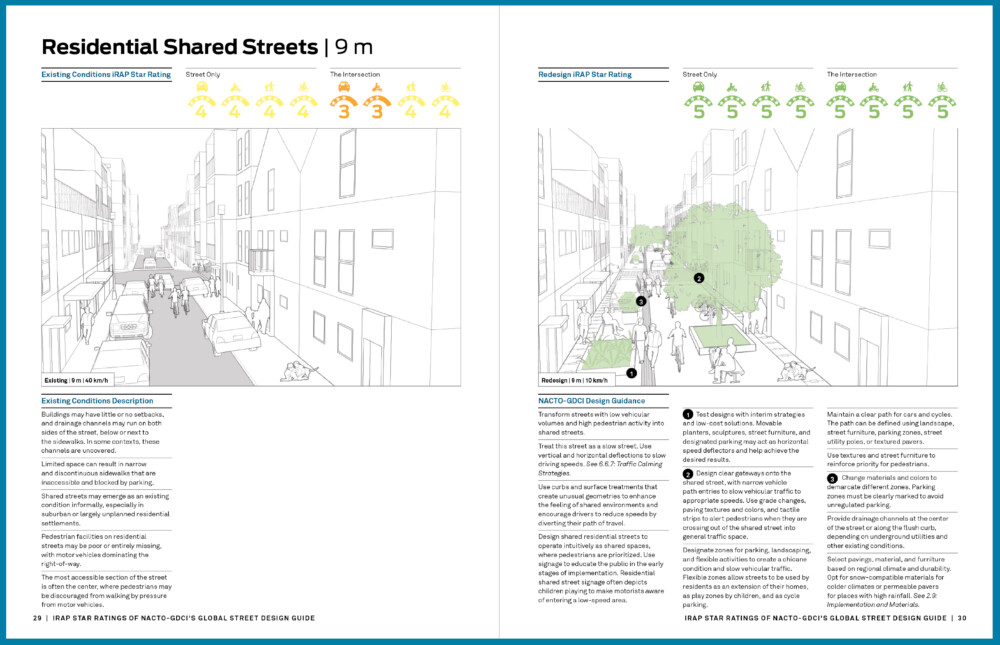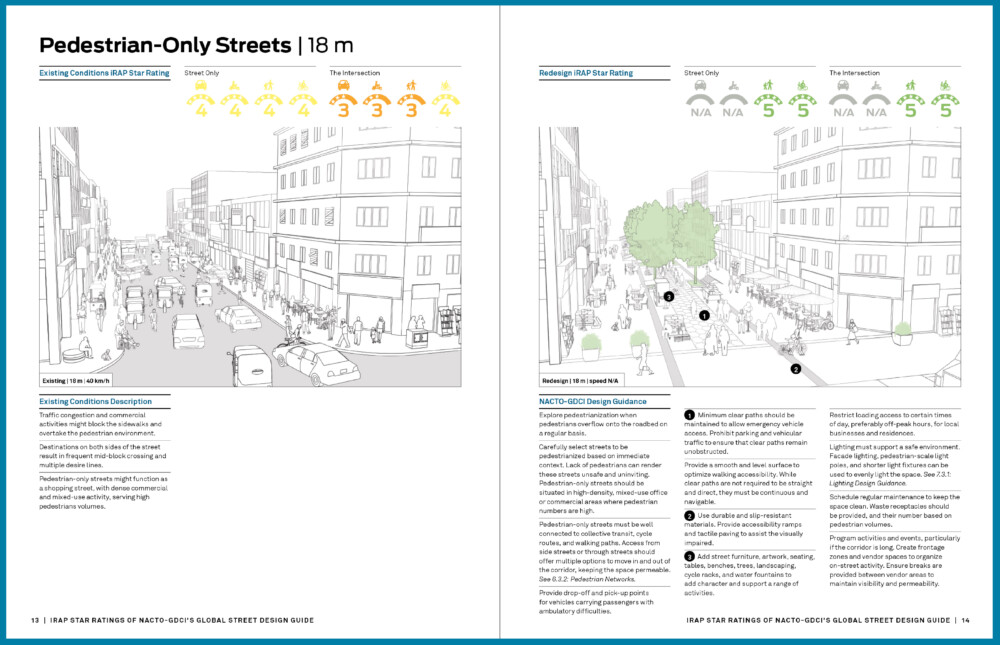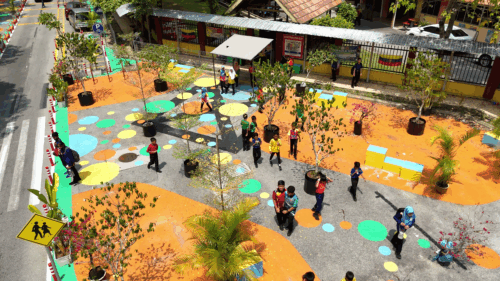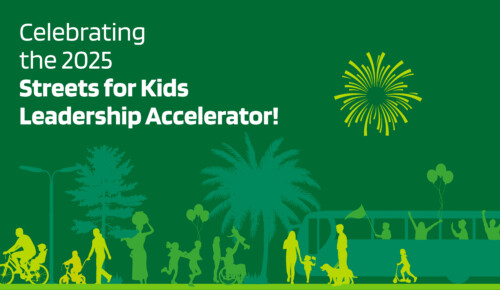
In partnership with the International Road Assessment Program (iRAP), NACTO’s Global Designing Cities Initiative is pleased to launch a free supplement to the Global Street Design Guide, which outlines the safety benefits of improved designs using iRAP’s Star Rating methodology. This resource is now also available in French, Portuguese, and Spanish!
The design strategies highlighted in the Global Street Design Guide aim to create a 5-star environment for all road users while supporting mobility outcomes that can best provide for healthy, safe, sustainable, equitable, and liveable cities for both current and future generations. As such, iRAP’s Star Rating methodology offers a useful framework for validating the tools and transformations featured in the publication.
About the Global Street Design Guide
Released in 2016 and supported by the Bloomberg Philanthropies Initiative for Global Road Safety (BIGRS) program, the Global Street Design Guide (GSDG) marked a step toward changing the traditional road hierarchy, with designs that save lives, prioritize people and sustainable mobility, reflect diverse communities, and better serve everyone on the street. The guide allows readers to review, choose, and adapt the tools and strategies that best apply to any given context. As a global blueprint for creating safer and higher-performing streets, the Guide has been endorsed and applied by over 100 cities and organizations around the world as a tool for addressing the 1.35 million road crash deaths and up to 50 million annual injuries that occur as a result of poorly-designed roads that solely prioritize automobiles.
About iRAP Star Ratings
Embedded into the UN Road Safety Targets, iRAP’s Star Ratings are the global standard for benchmarking road infrastructure safety. Providing a simple and objective measure of the level of safety provided by a road’s design, Star Ratings use a robust, evidence-based approach to assess the risk for four road user groups: pedestrians, bicyclists, motorcyclists, and vehicle occupants.
The Star Rating of the GSDG’s transformations provides decision-makers, engineers, and designers around the world with possible reconfigurations of a variety of street and intersection types, drawing from global case studies that have also been endorsed by iRAP’s proven methodologies. For those using the iRAP methodology, this effort can also offer ideas and potential strategies for achieving higher safety ratings while simultaneously supporting broader citywide goals. To learn more about iRAP Star Ratings, visit irap.org.
Endorse the GSDG
NACTO-GDCI invites cities, national governments, non-profit groups, and multilateral organizations to endorse this powerful vision for world-class street design. Endorsing the GSDG provides a permission slip for practitioners, organizations, and city leaders to re-imagine the role of streets and implement people-oriented designs. It communicates a message to citizens, colleagues, and partners that you are committed to advancing safe, healthy, sustainable, and vibrant streets using evidence-based design approaches. See the complete list of GSDG endorsements here.
If you’re interested in endorsing the GSDG, simply edit the endorsement template letter (here in English and here in Spanish) and send the signed letter to global@nacto.org. The letter should be placed on your organization/city letterhead and signed by the highest official representative of your organization or government agency.
Animation of a 24 m Residential Street (as seen on pages 37-38)
Animation of a 30 m Neighborhood Main Street (as seen on pages 43-44)
Animation of a 18 m Central One-Way Street (as seen on pages 45-46)
——————–
The production of the Global Street Design Guide and this collaborative star rating review would not have been possible without the support and guidance of Bloomberg Philanthropies and the Bloomberg Initiative for Global Road Safety (BIGRS).
iRAP is financially supported by the FIA Foundation. Projects receive support from the Global Road Safety Facility, mobility clubs, regional development banks, and donors. Our partners, charities, the motor industry, and institutions such as the European Commission also support RAPs in the developed world and encourage the transfer of research and technology to iRAP. In addition, many individuals donate their time and expertise to support iRAP.
